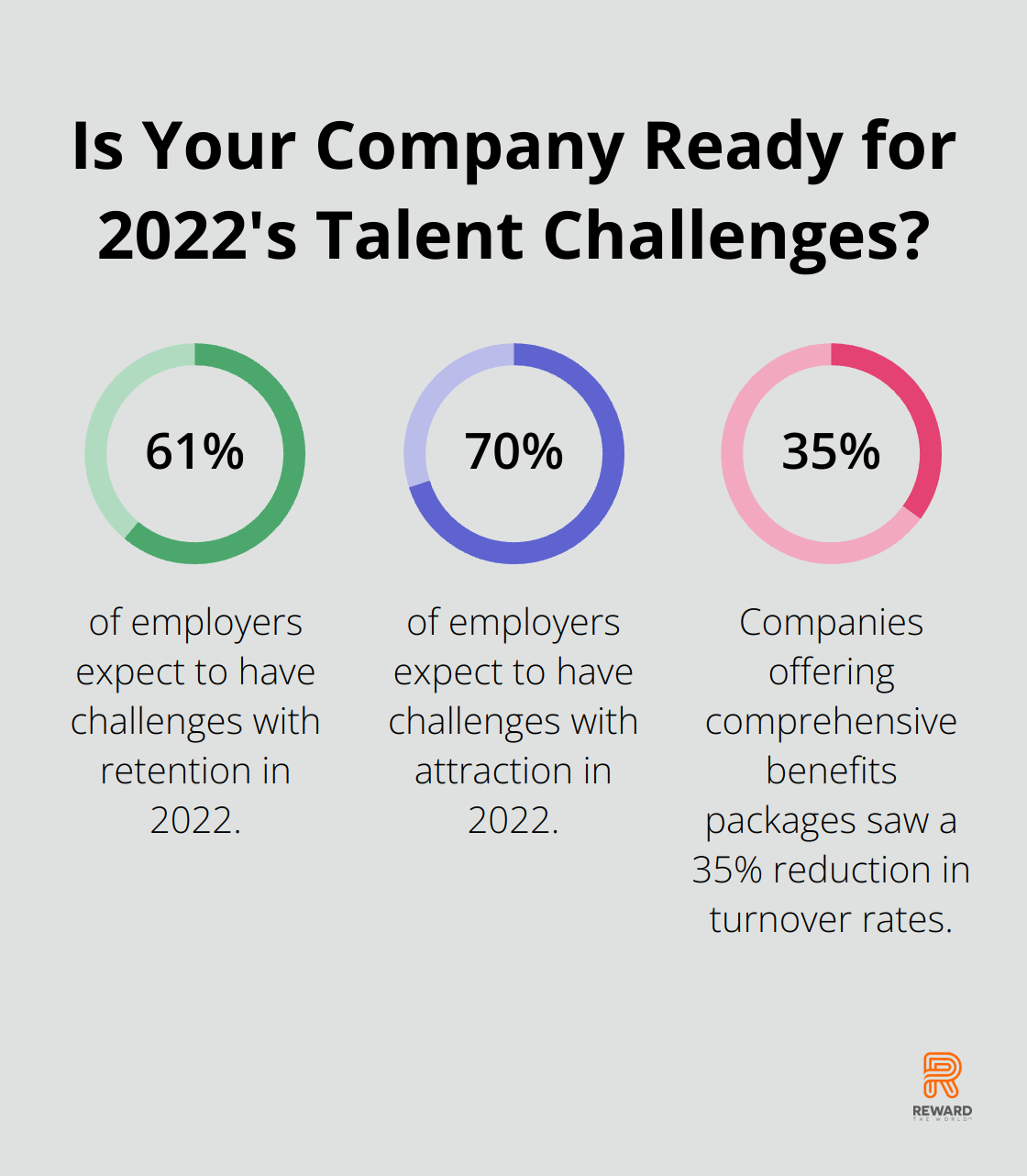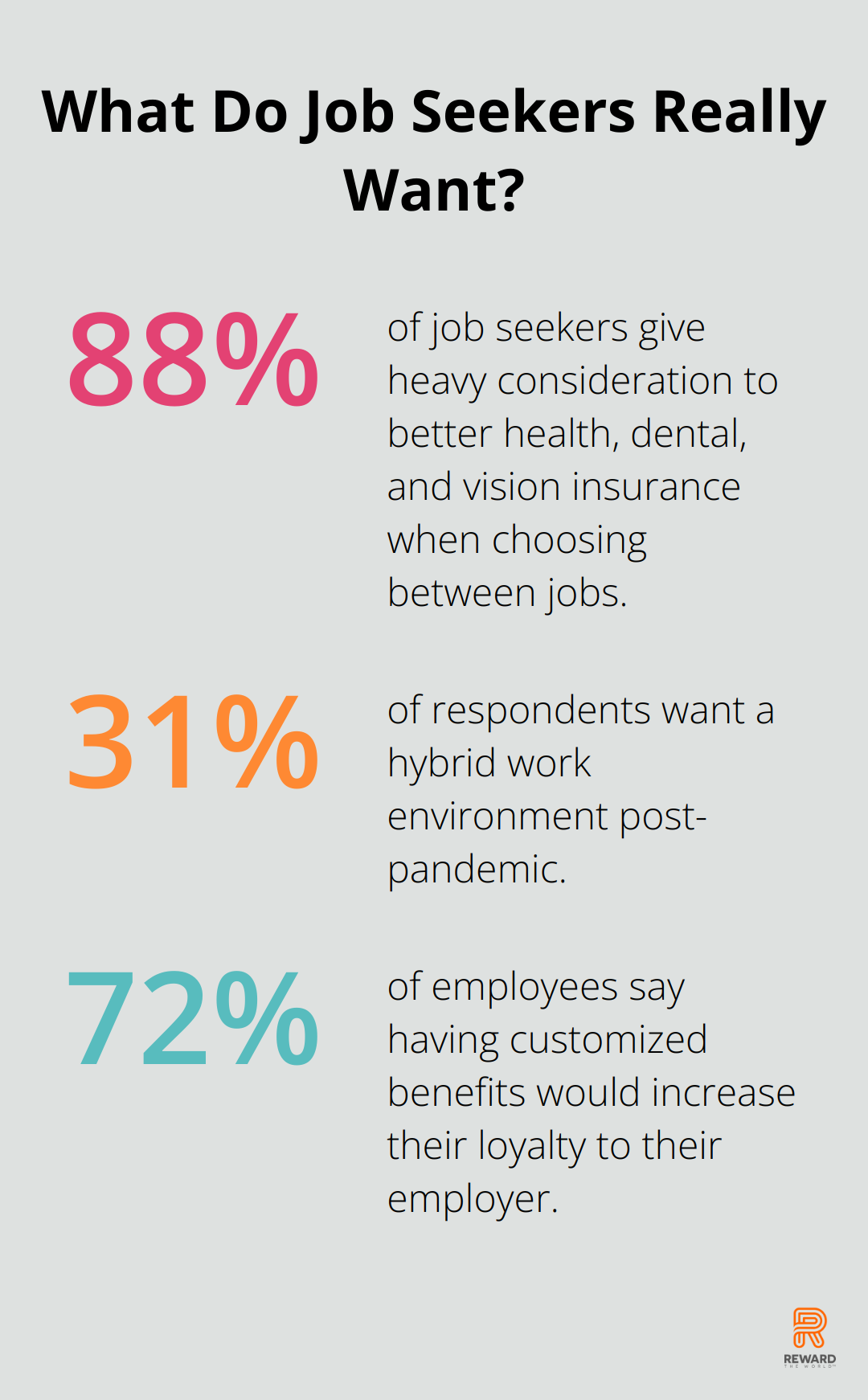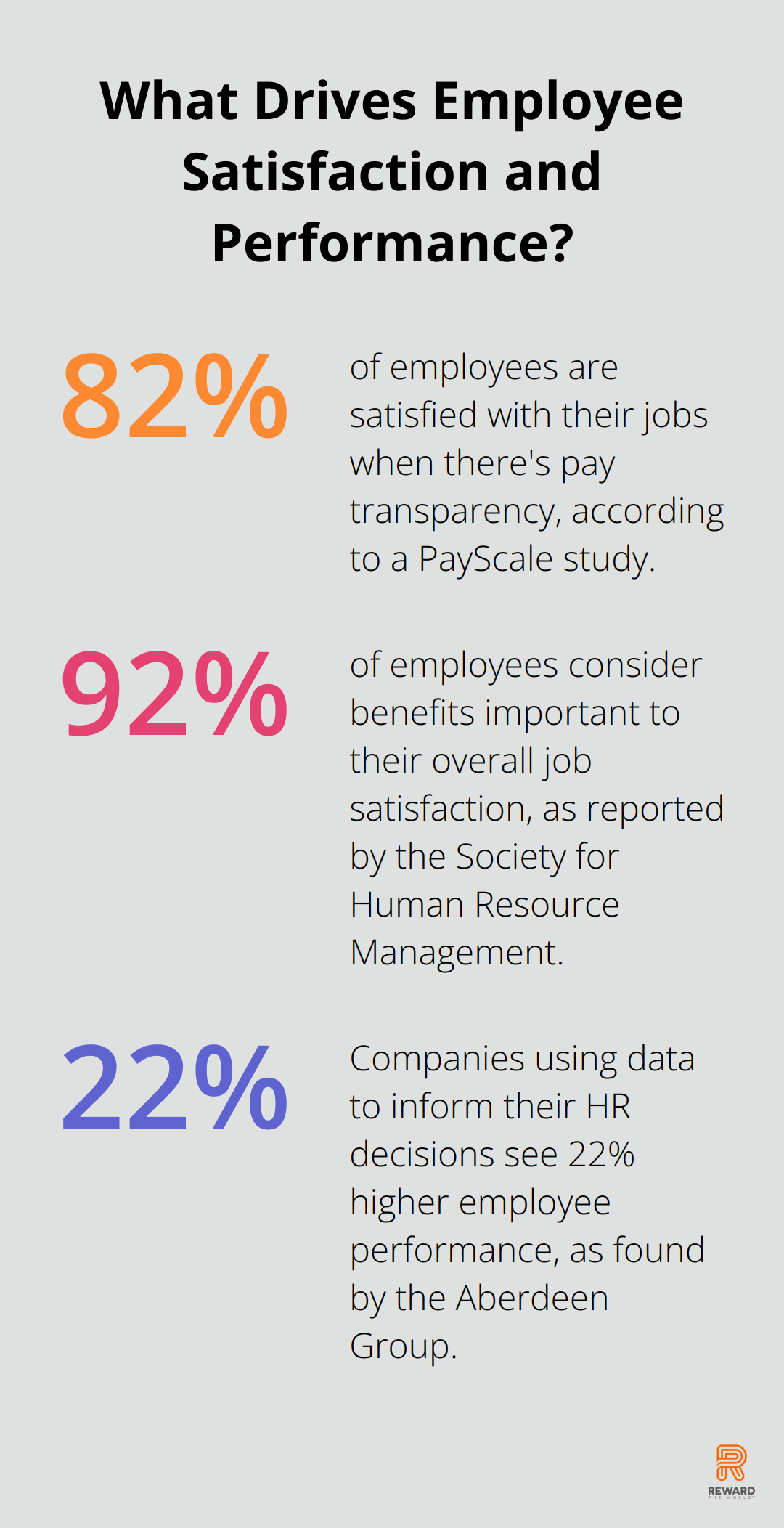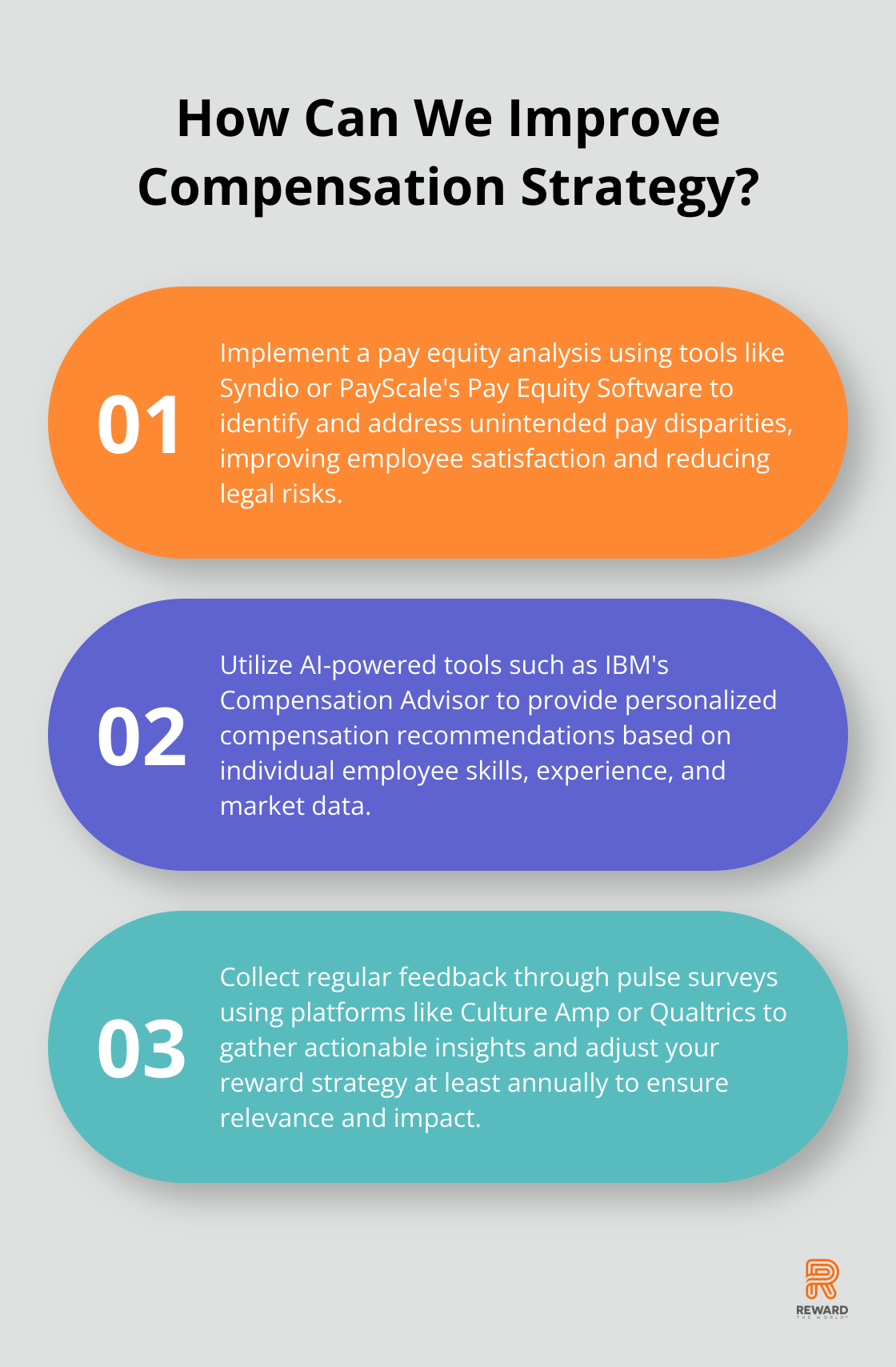
At Reward the World, we understand the critical role of remuneration and reward strategies in driving organizational success.
These strategies are the backbone of employee motivation, retention, and performance. In this comprehensive guide, we’ll explore the key components of effective remuneration and reward programs, from monetary incentives to non-monetary benefits.
We’ll also provide practical insights on implementing and evaluating these strategies to ensure they align with your company’s goals and culture.
What Makes Effective Remuneration Strategies?
The Foundation of Successful Reward Programs
Effective remuneration strategies form the cornerstone of organizational success. These strategies transcend mere paychecks and bonuses; they serve as powerful tools that mold employee behavior, boost performance, and contribute significantly to a company’s bottom line.
Key Components of Winning Strategies
Successful remuneration strategies rest on three pillars: fairness, transparency, and alignment with organizational goals. Some managers use employee recognition to reward, engage and retain employees, but training and usage are inconsistent. This alignment extends beyond matching pay to performance; it creates a holistic approach that considers both monetary and non-monetary rewards.

Competitive base pay stands out as a critical component. A PayScale survey found that 57% of employees who felt underpaid planned to seek new jobs within six months. To combat this, companies must regularly benchmark their salaries against industry standards. Salary surveys and compensation management software prove invaluable in helping organizations maintain competitiveness in the talent market.
The Total Rewards Approach
While competitive pay plays a vital role, it represents just one piece of the puzzle. Total rewards encompass a wide range of elements, from health benefits and retirement plans to career development opportunities and work-life balance initiatives. A Mercer study demonstrated that companies offering comprehensive benefits packages saw a 35% reduction in turnover rates.
Flexible benefits continue to gain popularity. These trends are expected to continue through 2024, with 70% of employers expecting to have challenges with attraction and 61% with retention. These options may include flexible work hours, remote work opportunities, or customizable health plans.
Measuring the Impact of Reward Strategies
Implementing effective remuneration strategies benefits not only employees but also the business as a whole. A Gallup study found that companies with highly engaged workforces outperform their peers by 147% in earnings per share. This underscores the importance of regular evaluation and adjustment of reward strategies.
To assess the impact of a remuneration strategy, organizations should consider metrics such as employee engagement scores, turnover rates, and productivity levels. Many companies utilize employee Net Promoter Scores (eNPS) to gauge satisfaction with their total rewards package. Regular pulse surveys provide real-time feedback on how employees perceive their compensation and benefits.
Technology’s Role in Reward Management
In today’s digital age, technology plays a pivotal role in managing and optimizing remuneration strategies. Advanced platforms (like Reward the World) offer tools to implement and manage reward programs effectively, ensuring they remain aligned with both employee needs and business goals. These platforms provide real-time data analytics, allowing companies to make informed decisions about their reward strategies and adapt quickly to changing market conditions.
As we move forward, the next chapter will explore the various types of remuneration and reward programs in detail, providing insights into how organizations can create a diverse and appealing rewards portfolio to attract and retain top talent.
What Are the Most Effective Types of Rewards?
The Power of Monetary Rewards
Monetary rewards continue to form the backbone of effective remuneration strategies. Base salary provides the foundation, but additional monetary incentives often drive performance. A survey by WorldatWork reveals that 84% of organizations offer short-term incentives, such as annual bonuses tied to individual or company performance.

Profit-sharing plans have gained popularity, especially in tech startups. These plans give employees a stake in the company’s success, fostering a sense of ownership. Gravity Payments implemented a profit-sharing model that resulted in repeated pay increases and a “surprising” productivity jump, as well as overall company profits. However, the company faced harsh criticism from Fox News.
Stock options and equity grants serve as another powerful tool, particularly for attracting top talent in competitive industries. The National Center for Employee Ownership found that ESOP companies fared better in terms of workforce performance compared to non-ESOP food companies.
Non-Monetary Rewards That Make an Impact
While money matters, non-monetary rewards often resonate more in terms of long-term engagement. Recognition programs, when executed effectively, can transform employee motivation. A Gallup study showed that employees who receive regular recognition are 5 times more likely to stay with their company.
Career development opportunities hold increasing value, especially among millennials and Gen Z workers. LinkedIn’s 2018 Workforce Learning Report highlighted that 93% of employees would remain at a company longer if it invested in their careers.
Mentorship programs and leadership training benefit employees and create a pipeline of future leaders for the organization. Companies like Google and Microsoft have experienced significant success with their mentorship initiatives, reporting higher retention rates and faster career progression for participants.
Comprehensive Benefits Packages
Health insurance remains a top priority for employees, with 88% of job seekers giving heavy consideration to better health, dental, and vision insurance when choosing between jobs (according to a Glassdoor survey).
Retirement plans hold equal importance. A study by Willis Towers Watson found that 75% of employees are more likely to stay with their employer because of their retirement plan.
Paid time off (PTO) policies continue to evolve, with some companies offering unlimited PTO. While this might seem counterintuitive, companies like Netflix have reported increased productivity and employee satisfaction with this approach.
The Rise of Flexible Reward Options
Flexibility defines modern reward strategies. Customizable benefits allow employees to choose what matters most to them. A study by MetLife found that 72% of employees say having customized benefits would increase their loyalty to their employer.
Work-from-home options have become essential in the post-pandemic world. A survey by FlexJobs showed that 65% of respondents want to work remotely full-time post-pandemic, and 31% want a hybrid work environment.
Wellness programs that include mental health support have gained prominence. Johnson & Johnson’s wellness program resulted in a $2.71 return on investment for every dollar spent, showcasing the financial benefits of investing in employee well-being.
As we move forward, it’s clear that the most successful reward programs offer a mix of these elements, tailored to the unique needs of each organization and its employees. The next chapter will explore how to implement these diverse reward strategies effectively, ensuring they align with company goals and culture while maximizing their impact on employee motivation and organizational success.
How to Implement Effective Reward Strategies
Align with Company Culture and Goals
Define your organization’s values and long-term objectives clearly. Companies with a strong sense of purpose outperform the S&P 500 by a factor of 8 (according to a Deloitte study). Your reward strategy should mirror these values. For example, if innovation is a core value, implement rewards for successful patent applications or breakthrough ideas.

Involve employees in the process. Conduct focus groups or surveys to understand what motivates your workforce. A TINYpulse survey revealed that 69% of employees would work harder if they felt their efforts received better recognition. Use this feedback to tailor your rewards program.
Conduct Thorough Market Research
Stay competitive with up-to-date market data. Use salary surveys from reputable sources (such as PayScale or Mercer) to benchmark your compensation against industry standards. These surveys often lag behind real-time market conditions, so supplement them with data from job postings and conversations with industry peers.
Don’t focus solely on base pay. The Society for Human Resource Management reports that 92% of employees consider benefits important to their overall job satisfaction. Research comprehensive benefits packages in your industry to ensure you offer a competitive total rewards package.
Create a Fair and Transparent Structure
Build trust through transparency. A PayScale study found that 82% of employees are satisfied with their jobs when there’s pay transparency, compared to 60% when pay isn’t transparent. Develop clear criteria for pay increases and bonuses, and communicate these to all employees.
Implement a pay equity analysis. Tools like Syndio or PayScale’s Pay Equity Software can help identify and address any unintended pay disparities. Address these issues proactively to improve employee satisfaction and reduce legal risks.
Leverage Technology for Efficient Management
Modern reward management requires sophisticated tools. Platforms like Reward the World offer comprehensive solutions for managing complex reward programs across global workforces. These platforms automate reward distribution, track program effectiveness, and provide real-time analytics.
Use AI-powered tools for personalized rewards. For instance, IBM’s Compensation Advisor uses machine learning to provide personalized compensation recommendations based on an employee’s skills, experience, and market data.
Measure and Evaluate Continuously
Set clear metrics for success before you implement your strategy. These might include employee engagement scores, turnover rates, or productivity measures. The Aberdeen Group found that companies using data to inform their HR decisions see 22% higher employee performance.
Collect feedback regularly through pulse surveys or annual engagement surveys. Platforms like Culture Amp or Qualtrics can help streamline this process and provide actionable insights.
Adjust your strategy based on results. The most effective reward programs are dynamic, evolving with changing employee needs and market conditions. Review your strategy at least annually to ensure it remains relevant and impactful.
Final Thoughts
Remuneration and reward strategies form the foundation of successful organizations. These strategies drive employee motivation, retention, and overall business performance. Effective approaches extend beyond basic compensation, encompassing monetary incentives, non-monetary benefits, and flexible options tailored to diverse employee needs.

Organizations that prioritize alignment with company culture, thorough market research, and fair structures position themselves to attract top talent. They boost productivity and maintain a competitive edge in today’s dynamic business landscape. The future of reward management will likely include location-based pay adjustments, AI-driven personalization, and an increased focus on holistic well-being programs.
Platforms like Reward the World offer comprehensive solutions to implement and manage effective reward programs. With global reach, instant reward delivery, and robust analytics, Reward the World empowers businesses to create impactful strategies. These strategies drive engagement and boost company performance in today’s competitive business environment.
